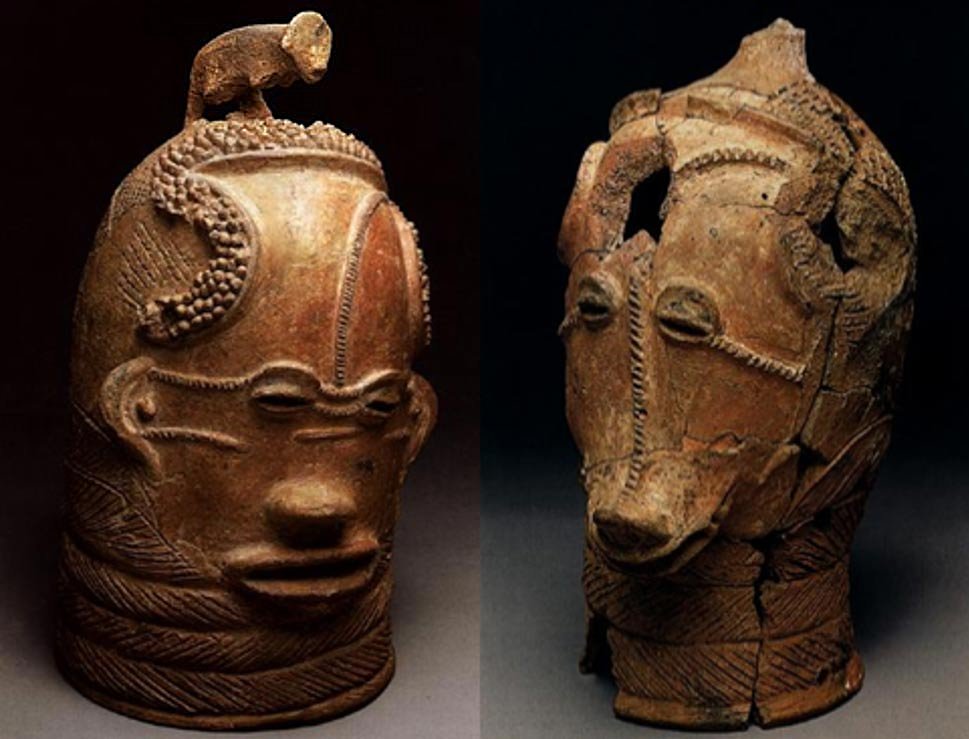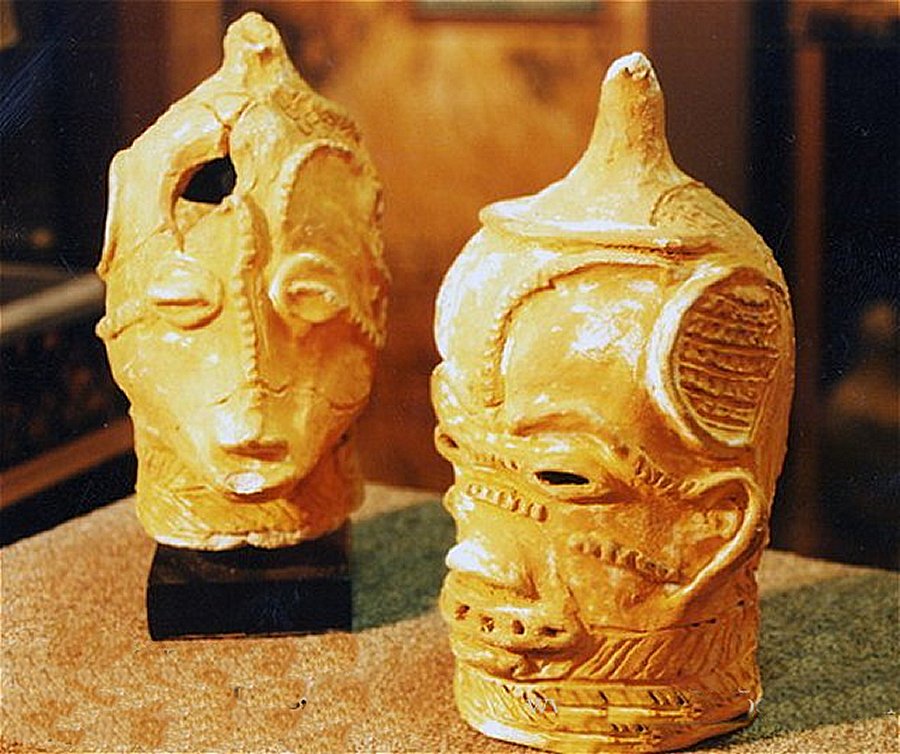Mystery Of The Lydenburg Heads
A. Sutherland - AncientPages.com - In 1957 a young boy, Karl-Ludvig "Ludi" von Bezing (now famous Austrian-South African mineral collector), saw pieces of some mysterious heads while playing in the field on his father's farm, near Lydenburg, Mpumalanga, South Africa.
He returned to the area a few years later and, over a period of several years, collected the pieces of seven heads. This internationally important discovery is known as the Lydenburg Heads.
The artifacts are one of the earliest known forms of African sculpture in Southern Africa. There are seven hollow terracotta sculptures that are named after the site at which they were discovered in the late 1950s.
The heads have scarification marks (scars intentionally created to form patterns on the flesh) on the forehead, temples, and between the eyes. Six of the heads are human and the seventh is some kind of an animal replica.
Nearly life-size terracotta heads are ancient masks officially dated back to 500 AD and represent the earliest and unique sculpture found in southern Africa.
Excavations suggest that the heads may have been burned and deliberately buried, rather than just discarded or abandoned.
The reconstructed heads are not identical but do share a number of characteristics. Modeled strips of clay form the thinly opened oval eyes, slightly projecting mouths, noses, and ears, and raised bands decorating the faces, while the backs of the heads are adorned with incised linear patterns.
The columnar necks are defined by large furrowed rings, Necks ringed with fat have been and continue to be viewed as a sign of prosperity by many African peoples.
However, it is currently impossible to know whether the rings on the Lydenburg heads were intended to be read in this way due to the barely sufficient information available on the ancient culture that produced them.
Nearly life-size terracotta heads are ancient masks officially dated back to 500 AD and represent the earliest and unique sculpture found in southern Africa.
The purpose of the heads is obscure.
Little is known of people who created them but the careful manner, in which they were buried suggests that the masks were of significant value for the people who laid them under the ground.
The heads have scarification marks (scars intentionally created to form patterns on the flesh) on the forehead, temples, and between the eyes. Six of the heads are human and the seventh is some kind of an animal replica.
Of the seven heads, two of them are large enough to be worn as helmets and are surmounted by animal figurines. The other five are decorated with a hole on either side of the neck which was likely used to attach them to a costume or structure.
Animals are a common motif in African mask making. They represent the spirit of an animal and one that bears the mask, becomes that animal himself which allows for communication with that animal, for instance, to ask the animal to keep away from the village. In other cases, the animal is a symbol of virtue.
The most common animals that are represented with masks are buffalo, hyena, hawk, crocodile, and antelope. Antelope is one of the most widely used animal masks, additionally, a small unidentifiable animal sits atop one of the Lydenburg heads.
What kind of role did this unrecognizable animal play for the creators of the Lydenburg Heads? While their actual use continues to be a mystery, archeologists have suggested that they were likely used during initiation rituals as in during the rites of enactment that signified the transition to a new social status or perhaps membership into an exclusive group.
In absence of contemporaneous written documents, the only possibility is to guess at the use and meaning of a head such as this one.
The animals appear only on those Lydenburg heads large enough to have served as helmet masks. The original heads are now housed in the Iziko National Musem in Cape Town and their replicas are displayed in the Lydenburg Museum, Lydenburg, Mpumalanga.
Written by – A. Sutherland AncientPages.com Staff Writer
Copyright © AncientPages.com All rights reserved. This material may not be published, broadcast, rewritten or redistributed in whole or part without the express written permission of AncientPages.com
More From Ancient Pages
-
 Riddle Of The Hanging Gardens Of Babylon – Highly Advanced Technologies – Part 2
Featured Stories | Jun 11, 2019
Riddle Of The Hanging Gardens Of Babylon – Highly Advanced Technologies – Part 2
Featured Stories | Jun 11, 2019 -
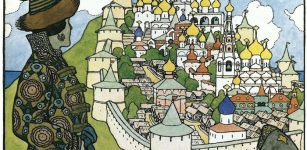 Sacred Hidden Buyan Island And The Mysterious Alatyr Stone With Healing Powers May Have Existed
Featured Stories | Mar 22, 2018
Sacred Hidden Buyan Island And The Mysterious Alatyr Stone With Healing Powers May Have Existed
Featured Stories | Mar 22, 2018 -
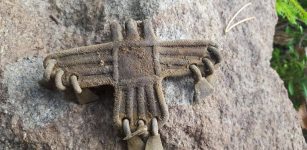 Unique Ancient Three-Headed Eagle Pendant Discovered In Finland: A Symbol Of Three Different Human Souls
Ancient Symbols | May 6, 2016
Unique Ancient Three-Headed Eagle Pendant Discovered In Finland: A Symbol Of Three Different Human Souls
Ancient Symbols | May 6, 2016 -
 World’s Oldest Recorded Solar Eclipse Re-Writes History Of Egyptian Pharaohs
Archaeology | Oct 30, 2017
World’s Oldest Recorded Solar Eclipse Re-Writes History Of Egyptian Pharaohs
Archaeology | Oct 30, 2017 -
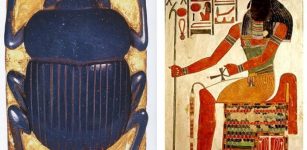 Khepri – Egyptian Progenitor God, Spirit Of Life, Resurrection And The Rising Sun
Egyptian Mythology | May 14, 2020
Khepri – Egyptian Progenitor God, Spirit Of Life, Resurrection And The Rising Sun
Egyptian Mythology | May 14, 2020 -
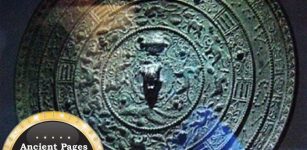 Mystery Of Ancient “Magical” Mirrors – Some Of The Strangest Objects In The World
Artifacts | Apr 21, 2011
Mystery Of Ancient “Magical” Mirrors – Some Of The Strangest Objects In The World
Artifacts | Apr 21, 2011 -
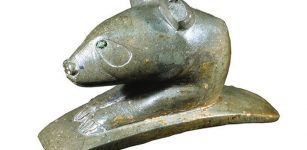 Use Of Tobacco Pipes By Hopewell People Tells A New Story
Archaeology | Jun 28, 2021
Use Of Tobacco Pipes By Hopewell People Tells A New Story
Archaeology | Jun 28, 2021 -
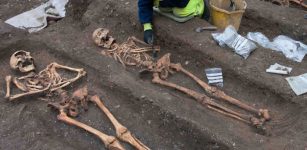 Medieval Friars Were ‘Riddled With Parasites,’ Study Finds
Archaeology | Aug 19, 2022
Medieval Friars Were ‘Riddled With Parasites,’ Study Finds
Archaeology | Aug 19, 2022 -
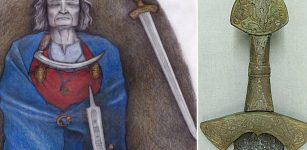 Suontaka Weapon Grave: New Light On Strong Female Leaders And Warriors Of Late Iron Age Finland
Archaeology | Jul 29, 2021
Suontaka Weapon Grave: New Light On Strong Female Leaders And Warriors Of Late Iron Age Finland
Archaeology | Jul 29, 2021 -
 What Was On The Menu For Stonehenge’s Builders, 2500 BC? Milk, Yoghurt And Cheese Only Eaten In Exclusive Ceremonies
Archaeology | Oct 14, 2015
What Was On The Menu For Stonehenge’s Builders, 2500 BC? Milk, Yoghurt And Cheese Only Eaten In Exclusive Ceremonies
Archaeology | Oct 14, 2015 -
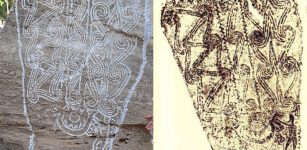 Bulgaria’s Reliefs From Ancient Thracian Sun Shrine – Restored
Artifacts | Sep 29, 2015
Bulgaria’s Reliefs From Ancient Thracian Sun Shrine – Restored
Artifacts | Sep 29, 2015 -
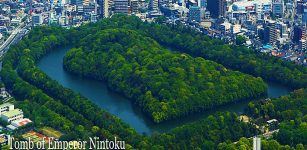 Kofun: Megalithic Keyhole-Shaped Tombs That Belonged To High Status People In Japan
Civilizations | Oct 31, 2018
Kofun: Megalithic Keyhole-Shaped Tombs That Belonged To High Status People In Japan
Civilizations | Oct 31, 2018 -
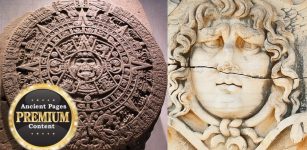 The Aztec Sun Stone And Medusa Reveal An Intriguing Connection – Surprising Discovery – Part 1
Aztec Mythology | Jul 30, 2018
The Aztec Sun Stone And Medusa Reveal An Intriguing Connection – Surprising Discovery – Part 1
Aztec Mythology | Jul 30, 2018 -
 Brahan Seer – A Legendary Scottish Nostradamus
Featured Stories | Feb 28, 2016
Brahan Seer – A Legendary Scottish Nostradamus
Featured Stories | Feb 28, 2016 -
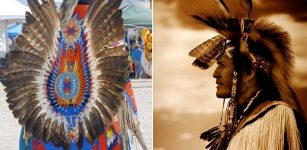 What Was The Symbolism Behind Native American Feathers?
Ancient History Facts | Apr 21, 2017
What Was The Symbolism Behind Native American Feathers?
Ancient History Facts | Apr 21, 2017 -
 1,800-Year-Old Entrance To Turkey’s Zerzevan Castle Found Among The Ruins
Archaeology | Aug 15, 2020
1,800-Year-Old Entrance To Turkey’s Zerzevan Castle Found Among The Ruins
Archaeology | Aug 15, 2020 -
 Hidden Rare Map Reveals How American “Hero” William Clark Broke Peacy Treaty And Robbed Indigenous Americans Of Land
Archaeology | Feb 7, 2022
Hidden Rare Map Reveals How American “Hero” William Clark Broke Peacy Treaty And Robbed Indigenous Americans Of Land
Archaeology | Feb 7, 2022 -
 Mysterious Biblical Celestial City And Its Connection To The North Star – Nonhuman Hands – Part 1
Biblical Mysteries | Feb 22, 2021
Mysterious Biblical Celestial City And Its Connection To The North Star – Nonhuman Hands – Part 1
Biblical Mysteries | Feb 22, 2021 -
 On This Day In History: Edgar Allan Poe Known For Tales Of Mystery And Macabre Was Born – On Jan 19, 1809
News | Jan 19, 2017
On This Day In History: Edgar Allan Poe Known For Tales Of Mystery And Macabre Was Born – On Jan 19, 1809
News | Jan 19, 2017 -
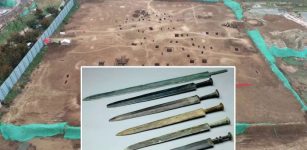 Well-Preserved Warring States Period Swords And Cultural Relics Discovered In Xiangyang, Hubei
Archaeology | Apr 5, 2024
Well-Preserved Warring States Period Swords And Cultural Relics Discovered In Xiangyang, Hubei
Archaeology | Apr 5, 2024

